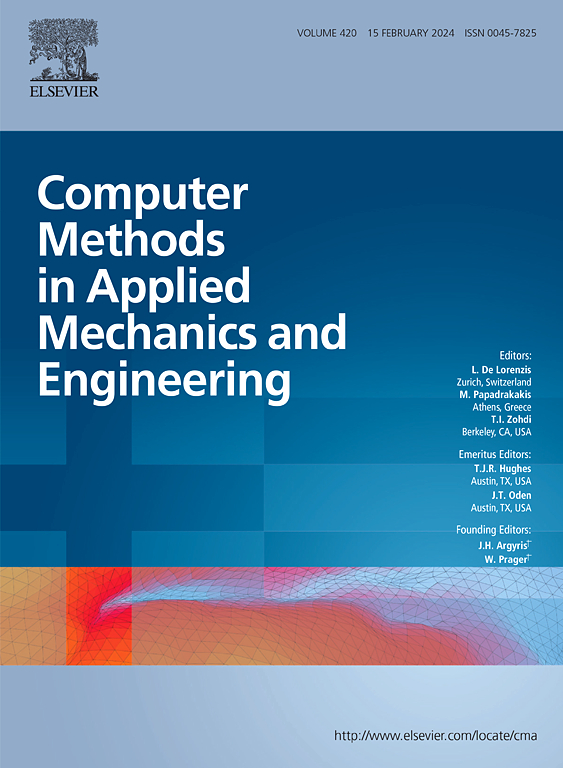Frictional contact between solids: A fully Eulerian phase-field approach
IF 6.9
1区 工程技术
Q1 ENGINEERING, MULTIDISCIPLINARY
Computer Methods in Applied Mechanics and Engineering
Pub Date : 2025-03-27
DOI:10.1016/j.cma.2025.117929
引用次数: 0
Abstract
Recent advancements have demonstrated that fully Eulerian methods can effectively model frictionless contact between deformable solids. Unlike traditional Lagrangian approaches, which require contact detection and resolution algorithms, the Eulerian framework utilizes a single, fixed spatial mesh combined with a diffuse interface phase-field approach, simplifying contact resolution significantly. Moreover, the Eulerian method is well-suited for developing a unified framework to handle multiphysical systems involving growing bodies that interact with a constraining medium. In this work, we extend our previous methodology to incorporate frictional contact. By leveraging the intersection of the phase fields of multiple bodies, we define normal and tangential penalty force fields, which are incorporated into the linear momentum equations to capture frictional interactions. This formulation allows independent motion of each body using distinct velocity fields, coupled solely through interfacial forces arising from contact and friction. We thoroughly validate the proposed approach through several numerical examples. The method is shown to handle large sliding effortlessly, accurately capture the stick–slip transition, and preserve history-dependent energy dissipation, offering a solution for modeling frictional contact in Eulerian models.
求助全文
约1分钟内获得全文
求助全文
来源期刊
CiteScore
12.70
自引率
15.30%
发文量
719
审稿时长
44 days
期刊介绍:
Computer Methods in Applied Mechanics and Engineering stands as a cornerstone in the realm of computational science and engineering. With a history spanning over five decades, the journal has been a key platform for disseminating papers on advanced mathematical modeling and numerical solutions. Interdisciplinary in nature, these contributions encompass mechanics, mathematics, computer science, and various scientific disciplines. The journal welcomes a broad range of computational methods addressing the simulation, analysis, and design of complex physical problems, making it a vital resource for researchers in the field.

 求助内容:
求助内容: 应助结果提醒方式:
应助结果提醒方式:


